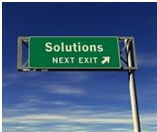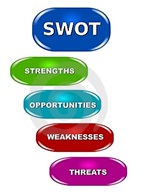|
 |
|
 |
|
|
||
Decision making
Decision making is... Deciding what to do and doing it. It’s what managers are paid for.
How to make good decisions
1. Define the problem and its causes These will normally arise from the unsatisfied needs of stakeholders – customers, employees, owners, lenders of money, suppliers and the local community. If possible, the problem must be seen in terms of how to provide creative solutions to their problems (particularly customers).
2. Identify alternative solutions Use the 5 I’s to create as many solutions as possible:
a) information (relevant to the problem, particularly the lessons of experience and past mistakes).
b) intelligence (talented decision makers who effectively apply their knowledge and logical thinking).
c) involvement (involving the stakeholders affected by the problem).
d) intuition (a gut feeling that something is right).
e) ideas (using creative techniques like lateral thinking to generate as many possible solutions as possible – see creativity)
3. Choose the best solution The same selection criteria should be used as in corporate
strategy:
Other evaluation techniques include:
a) operations research (OR) Applying mathematics and statistics to management problems.
b) scenario planning Evaluating decisions in future situations or scenarios.
c) cost /benefit analysis Calculating all the costs and benefits of a decision including its social impact (e.g. the environment and local community).
d) investment appraisal techniques (like discounted cash flow – see capital investment appraisal).
e) risk analysis Assessing the risks of different decisions.
f) decision trees Diagrams which show the possible outcomes of different options.
“No decision can be better than the people who have to carry it out”, - Peter Drucker (in his book, The Practice of Management , pictured right) People are the key to successful decision making. Managers’ biggest mistake is “finding the right answer rather than the right question”,Drucker says in another book, Management (1973). The best decisions start with asking questions relating to an organization’s objectives (particularly customer satisfaction and innovation).
“We only think when we are confronted with problems” - John Dewey (American educational philosopher, pictured right) Problems force us to find solutions, and the most important decisions relate to finding solutions to customers’ problems. If a problem is too difficult, divide it into smaller, easier parts. “Divide each difficulty into as many parts as is feasible and necessary to resolve it”, said the French philosopher, René Descartes.
“We must take things as we find them, and not as we wish them to be” - Napoleon Bonaparte (French leader).(pictured right) Decisions must be based on reality, not wishful thinking and self-delusion. Be honest about your strengths and weaknesses.
“But above all try something”, Franklin D. Roosevelt, American president (pictured right) Do something effective and creative to solve your problems, but don’t be hurried into making the wrong decision. “Delay is preferable to error”, said another American president, Thomas Jefferson. But speed is often vital – “Solve it quickly, solve it right or wrong”, advised the ex- IBM boss, Thomas Watson Snr.
“All my life, whenever it comes time to make a decision, I make it and forget about it”, - Harry S. Truman (American president, pictured right) Once you’ve made a decision, don’t dwell on it but go on to the next one without any anxiety. Truman should know – he made the painful decision to drop an atomic bomb on Japan in 1945.
Best books
Peter Drucker (pictured right), Practice of Management (1954) Four factors affect decisions:
Herbert Simon (pictured right), The New Science of Management Decision (1960) Decision making involves three activities:
Often managers will “satisfice” i.e. choose a satisfactory (not the best) solution, because this is easier and less complicated. Decisions can be either:
James March (pictured right) Decisions and Organizations (1988) Decision making is affected by:
a) managers’ limited time and mental capacity (reducing the information they have available and the number of alternative solutions).
b) the conflicting interests of employee groups (leading to negotiated decisions that are acceptable but not necessarily the best).
c) learning (from past decisions).
Malcolm Gladwell (pictured right), Blink (2005) Good decisions can be made in a blink (in the first two seconds).
Victor Vroom (pictured right), Some Personality Determinants of the Effects of Participation (1960) People are motivated by participation in decision making, particularly those who value equality and independence. |
|
|
||
|
|
||
| Copyright © wisdomtowin.com 2025 All Rights Reserved | ||
|














